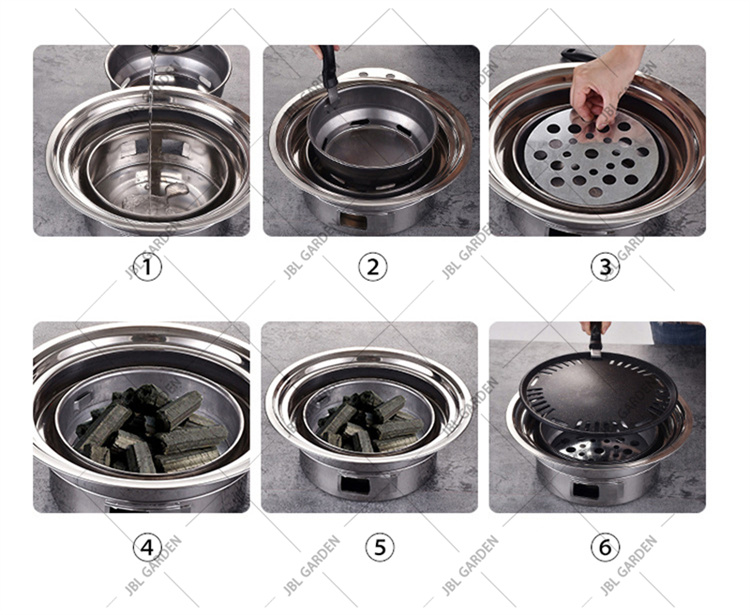Analysis and Application of the Disaster Tolerance Program of Library Data Resources—Taking the Disaster Tolerance Application and Planning Program of the Central Branch of the Central Academy of Fine Arts as an Example
Guo Qing Ni Jing Central Academy of Fine Arts Beijing 100121
Abstract: Briefly elaborate the data security issues under the model of the library in different locations.
Keywords: Main Branch; Data Security; Disaster Recovery
In the process of rapid development in the direction of informatization and digitization, the library has continuously utilized various advanced network technologies, communication technologies, computer technologies, and information technologies to form massive electronic resources. Taking the Central Academy of Fine Arts Library as an example, there are business automation systems, e-books, multimedia resources, and various characteristic databases. With the characteristics of mass storage and fast access, electronic resources are extremely valuable to libraries. With advanced means such as the Internet, they have many advantages over paper media resources, and readers have become increasingly dependent on it; secondly, as colleges and universities Schools are adjusted and merged, and the scale of schools continues to expand. Each school has campuses with different geographic locations, which in turn results in libraries with different geographic locations also called branches (for example, Yanjiao Campus Library). Library data resources will face many types The service situation, the library's network and hardware environment are more complicated, and the requirements for the continuity of service and the accuracy of data are higher; today, we rely on high technology, we have to face viruses, hackers, system vulnerabilities, natural Disasters, man-made misoperations and other uncertain and unsafe factors, so we must formulate and adopt various levels of plans from all angles to take precautions to improve the disaster tolerance of the library's overall system.
Disaster recovery, in simple terms, is to establish a comprehensive and feasible solution to maximize the continuity and reliability of business system work, and ensure the integrity and consistency of data. It can be measured by two parameters, namely: RPO (Recovery Point Object) and RTO (Recovery Time Object), where RPO represents the amount of data that is allowed to be lost when a disaster occurs; RTO represents the system recovery time. For now, if the two parameter values ​​are more ideal, the cost of the input must be higher, so we need to balance the relationship between the two parameters and the cost input according to the actual situation, and select the most suitable combined disaster recovery plan. .
1. Application examples and comparison of several disaster recovery solutions
1. RAID (Redundant Array of Independent Disk) technology: uses independent redundant disk arrays to store critical data. Simply put, it is to combine several hard disks into a virtual single mass storage medium according to a specific control method. As the cost of hard drives decreases, this approach has become very popular. This method not only expands the storage capacity, but more importantly, due to the clever use of read-write and verification mechanisms (raid0-raid7), it can greatly improve the hard disk read and write speed and fault tolerance. According to the characteristics of the library database system, such as a large-scale continuous write operation, the raid5 specification is usually adopted. Its characteristic is that in each independent data disk, a separate area is opened for storing verification data of the same level of data, and the same level of verification data is generated at the same time of writing; when reading, the same level of verification data is also It is read in real time and the correctness of the data is checked. Therefore, the hard disk utilization rate is higher, the read rate is faster, and the fault tolerance is stronger. The structure is shown in Figure 1.
This method improves the fault tolerance of the system from the perspective of hardware and is transparent to users. However, due to hardware-based, if the system encounters sudden failures, natural disasters, power outages, etc., it is almost impossible to provide effective disaster recovery for the system, and even the integrity of the data cannot be guaranteed.
2. Data backup technology: make full use of the backup service of the database and create backup data on the storage medium in a specific format within a certain period of time. In the event of a disaster, you can use specific techniques to restore the backup data to achieve the purpose of disaster recovery. For example, for a system based on the SYBASE database, there are two types of backup. The first is to use SYBASE Backup Server (backup server) to do Dump backup for the entire database (including data, table structure, triggers, cursors, stored procedures , Transaction logs, etc.) do a physical backup.
Command format: dump database database name to device file name with parameters.
This method of data backup completely copies the operating environment and database. When using the load command to restore, it can be restored to the same size database (the size of the data and logs can only be exactly the same as the original). The advantage is that the database is complete and error-free, and the disadvantage is that the backup content cannot be viewed directly. The data of this backup method is generally generated on the database server. Therefore, you need to copy the backup files to other storage media in time after the backup is completed to prevent server failures and reduce the availability of backup data.
In order to better protect the backup data, we can also use the off-site preservation method, taking the Central Library of the Central Academy of Fine Arts and the Yanjiao Campus Library as examples (as shown in Figure 2). The local library serves as the main point server. Set up a backup service locally, back up data regularly, and copy the backup data from the server to other storage media in the local library in time. At the same time, the Yanjiao Campus Library links to the database server through the VPN network, and downloads the backup data to the FTP server regularly. Save in different places, which greatly improves the security of backup data.
The other is the data record backup. Taking the SYBASE database as an example is bcp backup. The backup content is mainly data tables.
Command format: bcp table name out path name file name -ct separator -u (user name) -p (password) -S (server name)
For example, developers of library automation management systems will provide some key table names, which can be backed up. This method is faster than the method, and the backup has a little impact on the system, so it can be appropriate. Increase the frequency of backups, and although this method cannot completely restore the original database, to a certain extent, it guarantees the most critical data in the database, such as borrowing and returning information, reader information, important logs, etc., for dump backup. The role of backup and control inspection. In addition, the backup data in this way is generated on the machine that performs the backup operation, and it can also be stored in a different place (as shown in Figure 2). That is, the library in the Yanjiao Campus library is also connected to the database and periodically executes the bcp backup command, which will The backup data is directly generated and stored in another place.
In the library, the advantage of this traditional technology is that the technology is simple and the cost is the lowest, which can ensure the minimum disaster recovery requirements of the system. In terms of cost, the requirements for the configuration of the working machine that performs the backup operation are not high. An ordinary PC can be connected to the server. In addition, according to the size of the backup data, a safe and suitable storage medium can be provided to meet the requirements. However, this method also has some shortcomings. First of all, we know that the higher the backup frequency, the smaller the RPO, but the backup is a database service, so it will occupy a certain amount of server resources during the backup, which will affect the performance of the service to a certain extent. And effect, so it is suitable to choose when the database is relatively idle; secondly, although we can back up the system regularly, but generally can not do real-time backup, when the system crashes, even if you can use the backup to restore, it will cause data loss, At the same time, during recovery, all users cannot access the database. Third, the stability of this backup method is poor, and the actual recovery time RTO also has a lot to do with the staff's technical level and hardware configuration.
Specific application: In the local library of the Central Academy of Fine Arts, the main server (HP) is run on the internal network segment, and a disk array is connected to the main server (the same, 16T capacity uses raid-5 mode), the database The device files are stored on the disk array, and there is another desktop computer on the same internal network segment as the server. On this desktop computer, use the library automation management system software to set the scheduled backup command (dump database melinets to "f: /bak20100508.dat "; Bcp melinets.readers out" f: /melinets.reader "-r-Ssybase-Usa-Ppwd, etc.), to achieve daily automatic dump backup of SYBASE database and bcp table backup. The entire backup time takes about 30 minutes. To minimize the impact on the system performance, set the backup time to start at 23:00 after closing. When the backup is completed, the backup file (bak20100508.dat) generated by the dump backup is placed on the storage array, so for remote backup, the ftp command is set on the desktop every day to download the backup file from the disk array to the desktop hard disk to save, and You can copy another copy on the CD-ROM and mobile hard disk. The table file (melients.readers) generated by bcp backup is directly on the desktop. This can also be copied on the CD-ROM and mobile hard disk, which also achieves the purpose of remote backup. A VPN network was established between the Yanjiao campus library and the local library, which achieved transparent access to the two campuses and facilitated the remote storage of backup data. The method was to install the SYBASE client on one client of the Yanjiao campus. Perform the same operation of the local library backup desktop computer at different times of the day (for example, 12:00 noon), automatically generate dump backup data and bcp backup table, it should be noted that the dump backup file name should be the same as the local backup file name (bak20100508. dat) are different, so as not to overlap each other, reduce the backup frequency, and then download the dump backup data to the desktop computer of the Yanjiao campus library through ftp, and timely dump the backup data and bcp table backup data generated by the Yanjiao campus on the CD and move Remote backup in hard disk. In this way, the actual backup frequency is to back up every half a day, which basically achieves maximum backup disaster tolerance without affecting performance.
Backup is only one of the most basic methods of disaster recovery. Generally, real-time cannot be realized, and it is asynchronous. It must rely on recovery. The recovery process requires manual participation. It can be called cold disaster recovery. This method is usually necessary for an important service in the library.
3. Dual-system hot backup: For important services, use two servers to back up each other and jointly execute the same service. When a server fails, the monitoring software automatically switches to another server to undertake service tasks in a short time, thus automatically ensuring that the system can continue to provide services without human intervention. This is a combination of software and hardware with high fault-tolerant application program. The common standard working mode is composed of 2 servers, a shared disk array and dual-machine hot backup software (as shown in Figure 3). The two servers are virtualized into the same IP external service. The service request is sent to one of them according to different working modes. The data is stored on the shared array. At the same time, the other server detects the main server according to the monitoring software. In case of failure, the system will automatically switch over and take over the service within a short period of time, which can guarantee very small RPO and RTO. For users, this operation is transparent, so as to achieve 24-hour non-stop service. The dual-system hot backup method is actually an application failover, which is an effective way to respond to server failures and restore services in a timely manner.
This method has high technical requirements, difficult maintenance, and relatively high cost input in all aspects. Mainly reflected in this way: at least 2 servers must be invested in this method (although the 2 server brands can be different, but the performance needs to be equivalent), and dual-system hot backup software is required (to ensure that the 2 servers work in an orderly manner in normal mode) ), Monitoring software (accurate judgment of faults, accurate and timely switching) and the operating system for regular maintenance inspections and upgrade tests to ensure the effectiveness of dual-machine hot backup. In addition, this method is only for the isolation of faults, and cannot automatically repair the faults. It also requires personnel with certain technology to judge and eliminate the faults of the server in time, and there is a certain maintenance cost. In addition, because the data is only stored on the shared array, it is also necessary to adopt a backup disaster recovery strategy for the disk array to ensure the security of the data. Due to the limited length of the SCSI cable, the physical distance between the active and standby servers and the disk array is limited, so that it cannot cope with failure disasters such as power outages, fires, and earthquakes.
4. In order to break through geographical restrictions and achieve remote disaster recovery, we can use some database disaster recovery solutions for important services. Taking the disaster recovery scheme of the SYBASE database as an example, the database automatic replication system and the client automatically switch the system to realize the disaster recovery function (as shown in Figure 4), namely: SYBASE replication server. Because it is a pure software method, the main point and backup point database systems can be located in a geographically distant place, connected through the network, either WAN or LAN, so the main and backup points can be arbitrarily distributed in the network. A copy of the system data is saved at both the main point and the backup point. Even if one copy is completely lost, the other copy can restore the system to the working state before the failure.
This method requires that both the main point and the backup point must be the SYBASE database and the same version. The database name, device name, and logical segment name must also be the same. However, the hardware system of the main point and the copy point need not be the same. The hardware of the copy point It can be lower than the hardware configuration of the main point, thereby reducing hardware investment costs and increasing the return on investment. This method is based on the SYBASE log, which can guarantee the consistency and integrity of the data, and can support the resuming of breakpoints, which can effectively solve the problem of incomplete data backup caused by network failures. However, because it is based on logs, administrators need to pay special attention and analyze the logs to monitor the operation of the SYBASE replication server to prevent errors from causing the logs to be unclear and affecting database performance.
Application example: Install the SYBASE Replication Server SYBASE Replication Server on the Yanjiao Campus Library Backup Server (HP BL680c). The main point database is configured according to the actual situation of the library database, such as IP address, port and administrator user and password. When installing the replication server, it is important to note that the file size, login, login id, role, and permissions of the SYBASE database device file in the main server of the local library must be exactly the same, and leave enough space for the log file, otherwise large transactions When copying, an error will be reported due to overflow. In this way, the backup server located in Yanjiao can replicate all operations of the main point database in real time, and monitor the operation status of the main point server. Once a problem occurs, it automatically switches the system to the backup server to take over all services. Intermittent operation. The problem is that the front-end application needs to be very rigorous and complete. Because its replication is entirely through the log, in the case of multiple users in the system, if the owner of the table or stored procedure is simplified, then an error will occur during replication, once the error cannot be processed in time, the log It will become larger and larger, to a certain extent, it will cause the log to be overfilled and seriously affect the operation, or even stop the service.
2. Comprehensive application of disaster recovery plan
By comparing the advantages and disadvantages of the above methods, we can integrate various conditions and needs to build the following disaster recovery plan for the library (as shown in Figure 5). The main database service is placed in the local library of the Central Academy of Fine Arts, and is first responsible for providing services to users. The backup server is placed in the library of Yanjiao Campus. It usually undertakes the backup task when it is normal, and takes over the service in time when there is a failure. Both the server and the hard drives of the array use raid technology, and when the funds allow, they each set up a dual-system hot standby system. Build the SYBASE replication server system on the local master server at the same time, connect the two database server systems that are mutually backed up, realize the data synchronization from the master node to the backup node, and promptly and accurately notify when the local master node fails, and quickly switch to Yanjiao The backup server works to realize transparent switching to the client. In addition, data backup is essential. We set up regular dump backups and data table backups of the main server locally and in Yanjiao, and store the backup data in multiple places in different places to manually restore data and services in the event that all automatic disaster recovery switching methods fail. There are also problems such as power outages, we can also use UPS emergency power supply and city power monitoring system to solve.
After the system is built, it is necessary to carry out disaster drills at an appropriate time to improve the familiarity with the system and master key technologies to ensure that the effective response can be calm and effective when different disasters occur.
In addition, there are now many high-end backup disaster recovery technologies, such as: snapshot technology, serverless technology, concurrent technology, NDMP-based NAS technology, IP-based SAN remote technology, etc., all have their own characteristics, hardware, network, Technology and maintenance investment also have their own requirements. We must continue to learn and understand various evolving technologies, apply and expand them to library disaster recovery solutions, and continuously improve the disaster recovery capabilities of library systems.
Disaster recovery case: There was a power outage accident in the computer room in the hall. Due to the aging of the UPS, the server shut down abnormally, the system failed, and the system could not be entered. Although the power failure was eliminated in time, the main database still suspended all services. Even dump backup files placed in the server and the array cannot be taken out. The situation is very urgent. However, due to the installation of the SYBASE replication server, it detected the failure of the main point server in time, successfully switched automatically, and immediately took over all services, so for users, they can hardly feel the impact of this blackout. For restoring the main point server, you can only reinstall the server operating system, and then rebuild the database according to the original database conditions (including device size, login, role, permissions, etc.). The power outage occurred at about 3 pm in Yanjiao. After the remote remote backup has been completed, the dump backup file of Yanjiao is immediately fetched. After the database is restored using the load command, the online database is successful, that is, the database is restored to 12 noon on the day. The loan information between the points (because the teachers in each department are notified in time, so there is no problem of updating the bibliographic data), so after closing the library, use the bcp backup command to export the loan information table of the replication server, the loan log table, the reader Tables and other circulation-related tables, and restored into the main server, after passing the database consistency check, no problem, switch back to the main server to work, and successfully recovered all data loss, and the service was not interrupted for one minute, fully reflecting the disaster recovery plan The effectiveness. However, this accident has also brought us lessons, we should always check the working condition of the UPS, check the operation of the SYBASE replication server and ensure the stability of the network and the preservation of multiple copies of effective backup data.
References [1] SYBASE disaster backup party. Http://64239.blog.51cto.com/54239/79827
[2] Zhang Chunfei. Research on the key technology of disaster recovery of digital library information system [J]. Information Exploration, 2010, 1: 108 ~ 109
Hello, grid charcoal roast *, in addition to baking, but also to prepare smoke-free special charcoal. In addition to the fire burning charcoal, in the barbecue process to continue to add charcoal to maintain the heat. Although this method can sometimes be "angry" and may even make people angry at other times, it is closer to nature and the food cooked by charcoal at high temperature will have a special fragrance. Charcoal grilling definitely tastes better than electric grilling, and it feels different. Electric grilling is just not that strong. However, there are many things to prepare for charcoal barbecue, and it is easy to get dirty. If you don't care about these, it is also very good to get a charcoal barbecue. If it is used at home, of course, the electric barbecue is convenient and clean. But if you want taste and fun, or charcoal is better.
| Name |
Camping Stainless Steel Grill |
| Material | Stainless steel |
| Size | 350*350*120mm |
| Packing | Pallet/carton/wooden box packing |




Packing
Packing will by carton.

Stainless Steel Bbq Grill,Steel Grill,Stainless Steel Grill,Stainless Steel Bbq
Henan Jinbailai Industrial Co.,Ltd , https://www.jblbbqgrill.com